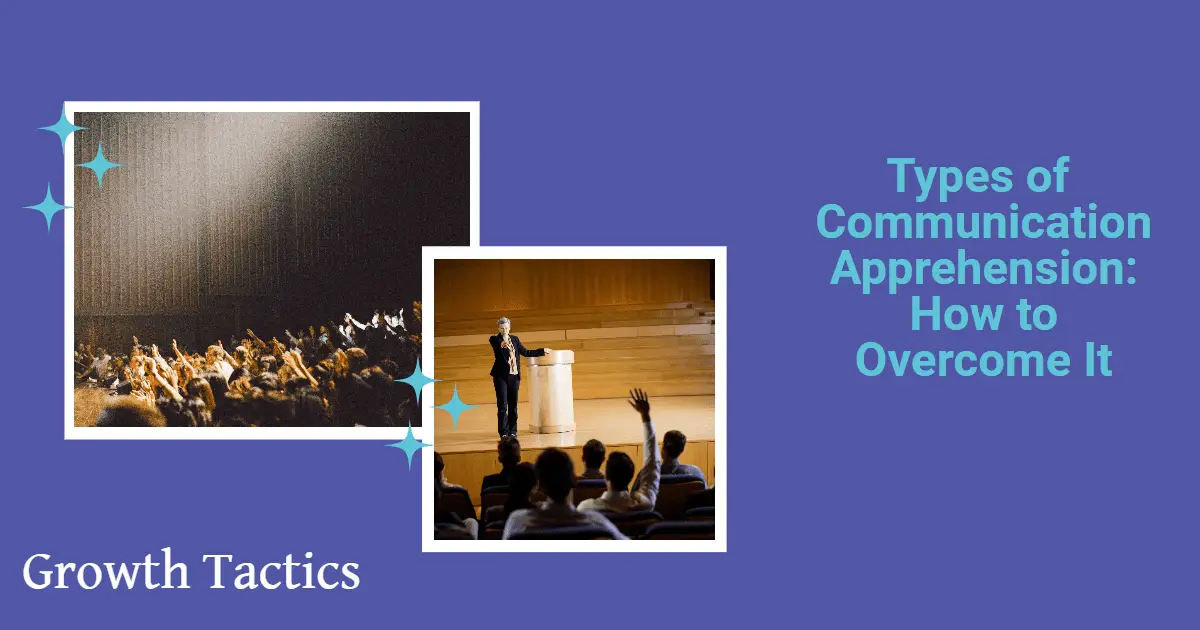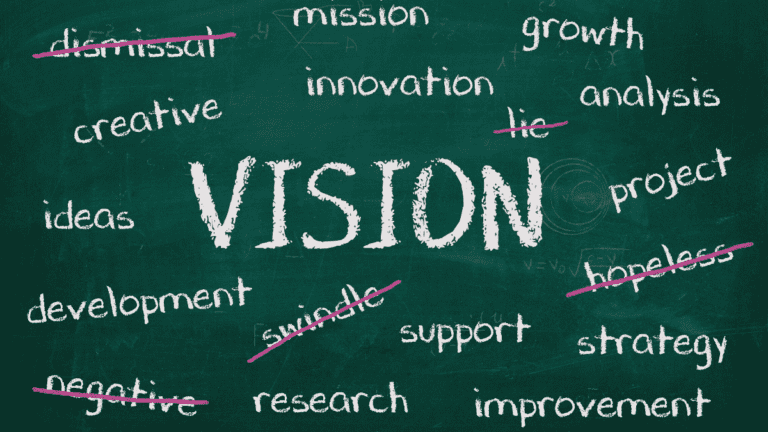Are you one of those people who feels anxious and nervous when it comes to speaking in public? If so, you’re not alone. Many individuals experience communication apprehension, which is the fear or anxiety associated with either real or anticipated communication with another person or group. But fear not! In this article, we will explore the different types of communication apprehension, the symptoms it can cause, and most importantly, the ways you can overcome it. So, grab a cup of coffee and get ready to boost your confidence in communication!
Jump To Section
Different Types of Communication Apprehension
Alright, let’s take a moment to explore the various types of communication apprehension that individuals may encounter. You see, communication apprehension isn’t a one-size-fits-all kind of deal. It can differ based on the situations, settings, and even personal traits. So, let’s dive in and get a better understanding of these different types. Here we go:
1. Trait Communication Apprehension
Ever met someone who always seems a bit on edge when it comes to communication? That’s trait communication apprehension for you! This type refers to individuals who consistently experience anxiety in various communication contexts. It’s like a built-in personality trait that affects their overall anxiety levels in different situations.
2. Audience Communication Apprehension
Ah, the nerves that kick in when speaking in front of an audience, especially a large one! This is what we call audience communication apprehension. Picture those sweaty palms, racing heart, and the overwhelming fear of stumbling over your words. The fear of public speaking is a classic example of this type of apprehension.
3. Situational Communication Apprehension
Now, situational communication apprehension is a bit different. It crops up in specific contexts but doesn’t necessarily haunt you in every communication scenario. Think of someone who might feel comfortable and confident in one-on-one conversations but gets anxious when it’s time to speak in front of a group. It’s all about the situation and how it affects your apprehension levels.
4. Interpersonal Communication Apprehension
Oh, the joys of interpersonal communication! This type of apprehension comes into play when engaging in conversations with others, whether they’re casual chats or more intense discussions. It’s that underlying anxiety that creeps up, making it challenging for some to maintain effective communication and good relationships.
Symptoms of Communication Apprehension
Communication apprehension can manifest in various ways, and it’s essential to be aware of the different symptoms to address it effectively. From physical symptoms to emotional responses, here are some common signs of communication apprehension that you may experience.
1. Physical Symptoms
You know that sensation of your heart racing, palms sweating, and a knot forming in your stomach? These are the classic physical symptoms of communication apprehension. It’s your body’s response to the perceived threat of communication, and it can significantly hinder your ability to connect with others.
2. Verbal Symptoms
Communication apprehension can also affect your speech. You may find yourself stumbling over words, speaking too quickly or too slowly, or even avoiding speaking altogether. The pressure to say the right things or communicate effectively can create a sense of paralysis, making it difficult to express yourself.
3. Behavioral Symptoms
Do you ever feel like your body language is working against you? Communication apprehension can also manifest in the form of behavioral symptoms like avoiding eye contact, fidgeting, or pacing. These behaviors can negatively impact how others perceive you, hindering your ability to establish trust and rapport.
4. Emotional Symptoms
The anxiety that comes with communication apprehension can create a web of emotions, from fear and nervousness to frustration and embarrassment. These emotions can further exacerbate communication difficulties, creating a cycle of apprehension that’s challenging to overcome.

Overcoming Communication Apprehension
Now for the moment you’ve been waiting for – overcoming communication apprehension! Let’s delve into some practical strategies that can help reduce your anxiety and boost your confidence:
1. Preparation is Key
One of the most effective ways to reduce communication apprehension is to be well-prepared. Practice your speech or communication in front of a mirror or with a trusted friend. The more familiar you become with the material, the less anxious you’ll feel.
2. Relaxation Techniques
Implement relaxation techniques to calm your nerves before and during a communication event. Progressive muscle relaxation, deep breathing exercises, and visualization techniques can all help you relax and feel more at ease.
3. Positive Self-talk
Replace negative thoughts and self-doubt with positive affirmations. Remind yourself that you are capable, knowledgeable, and deserving of being heard. Practice positive self-talk to boost your confidence and counteract any negative emotions.
4. Gradual Exposure
Start small and gradually expose yourself to communication situations that make you anxious. Begin by speaking in front of a small group or engaging in a group discussion. As you become more comfortable, gradually progress to larger audiences or more challenging conversations.
5. Seek Support
Don’t hesitate to seek support from friends, family, or professionals. Talking about your fears and anxieties can provide relief and help you gain perspective. Remember, you’re not alone in this journey.
6. Embrace Your Unique Style
Don’t try to imitate someone else’s communication style. Embrace your own unique way of speaking and expressing yourself. Authenticity builds connection and helps you feel more comfortable.
7. Use Humor to Lighten the Mood
Inject a touch of humor into your communication whenever appropriate. A well-timed joke or a light-hearted anecdote can help ease tension and create a positive atmosphere.
8. Practice Active Listening
Develop your active listening skills by fully engaging in conversations with others. Focus on understanding their perspective, ask questions, and show genuine interest. This not only enhances your communication abilities but also builds rapport.
9. Record and Evaluate Yourself
Record your communication practice sessions or speeches and evaluate them later. Pay attention to areas where you can improve, such as vocal clarity, pacing, or body language. Self-reflection is a powerful tool for self-improvement.
10. Visualize a Supportive Audience
Picture a supportive and encouraging audience or conversation partner in your mind. This visualization can boost your confidence and help you feel more at ease, knowing that you are communicating with people who want you to succeed.
11. Seek Opportunities for Feedback
Seek constructive feedback from trusted individuals who can provide honest assessments of your communication skills. Their insights can help you identify areas of improvement and further refine your abilities.
12. Challenge Negative Thoughts
Challenge negative thoughts that may arise before or during communication. Replace them with positive affirmations and remind yourself of past successes. You are capable of overcoming your communication apprehension.
13. Learn from Role Models
Observe and learn from individuals who excel in the art of communication. Watch TED Talks, listen to podcasts, or attend public speaking events to gain insights and inspiration from experts in the field.
14. Engage in Mindfulness Practices
Incorporate mindfulness practices into your daily routine to cultivate present-moment awareness. Being mindful can help reduce anxiety and allow you to fully immerse yourself in the communication experience.
15. Celebrate Your Progress
Acknowledge and celebrate your progress along the way. Every step forward, whether big or small, deserves recognition. Pat yourself on the back for stepping outside your comfort zone and continuously striving to improve.

Tried and True Communication Techniques
Hey there, communication enthusiast! It’s time to take your skills to the next level. We’re about to embark on a journey of exploration as we dive deep into specific communication techniques. Buckle up, and let’s get started!
The Power of Active Listening
Have you ever felt like someone truly understood you? That’s the magic of active listening! This technique goes beyond simply hearing the words being spoken. It involves giving your full attention, showing genuine interest, and providing thoughtful responses. Through active listening, you can build stronger connections, resolve conflicts more effectively, and foster a sense of trust and understanding.
Step 1: Focus on the Speaker – Give the speaker your undivided attention. Maintain eye contact, nod in agreement, and use attentive body language to show you’re fully engaged.
Step 2: Avoid Interrupting – Let the speaker finish their thoughts before jumping in with your own input. Patience is key here!
Step 3: Reflect and Clarify – Summarize what the speaker has said to ensure you’ve understood them correctly. Ask clarifying questions to fill in any gaps in your understanding.
The Art of Non-Verbal Communication
Did you know that words only account for a small portion of our overall communication? Non-verbal cues, such as facial expressions, gestures, and tone of voice, play a significant role in conveying our true thoughts and emotions. By understanding and harnessing the power of non-verbal communication, you can enhance your message’s impact and connect with others on a deeper level.
Step 1: Pay Attention to Body Language – Observe the speaker’s body language, including facial expressions, hand movements, and posture. These cues can offer valuable insights into their emotions and intentions.
Step 2: Use Expressive Facial Expressions – Smile when appropriate, show empathy through your eyes, and use facial expressions that match the content of your message.
Step 3: Mind Your Tone – The tone of your voice can convey a range of emotions. Practice modulating your tone to match the desired message, whether it’s assertive, empathetic, or enthusiastic.
The Magic of Storytelling
Stories have captivated humans since the dawn of time. They have a unique power to engage, inspire, and leave a lasting impact. By incorporating storytelling into your communication repertoire, you can bring your messages to life, make them more relatable, and create memorable experiences for your audience.
Step 1: Choose an Engaging Narrative – Select a compelling story that aligns with your message or desired outcome. It should resonate with your audience and evoke emotions.
Step 2: Craft a Clear Structure – A well-structured story has a clear beginning, middle, and end. Capture your listeners’ attention, build suspense or emotional connection, and end with a satisfying resolution.
Step 3: Use Vivid Language – Paint a vivid picture with your words, using descriptive language that appeals to the senses. This will immerse your audience in the story and make it more memorable.
Key Takeaways
- Communication apprehension, the fear or anxiety associated with communication, can be overcome.
- Understanding the different types of communication apprehension can help you tailor your approach.
- Recognizing the symptoms of communication apprehension can empower you to address them effectively.
- Preparation, relaxation techniques, positive self-talk, gradual exposure, and seeking support are strategies that can all contribute to overcoming communication apprehension.
Remember, overcoming communication apprehension takes time and practice. Be patient with yourself and celebrate your progress along the way. With dedication and perseverance, you can conquer your speaking anxiety and become a confident communicator. So, go out there and seize every opportunity to express yourself, because you have the power to make an impact through effective communication!








